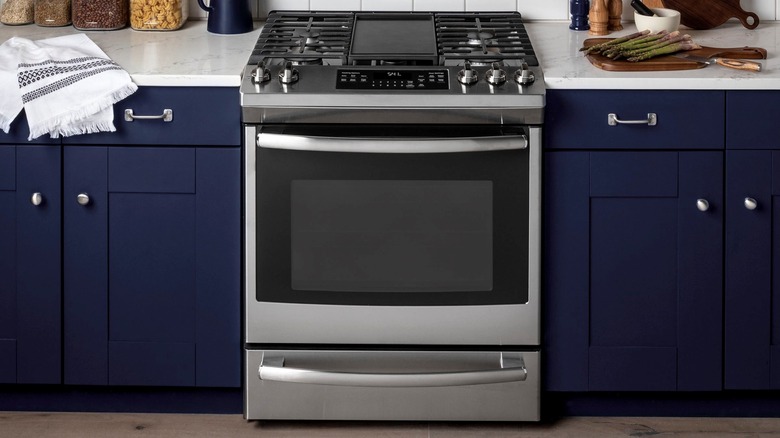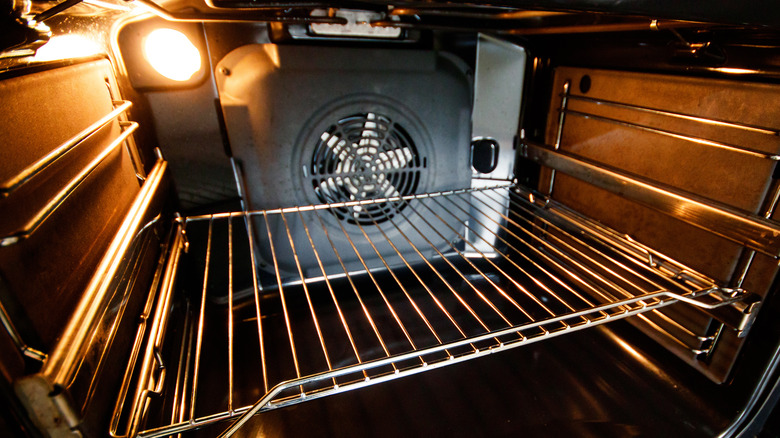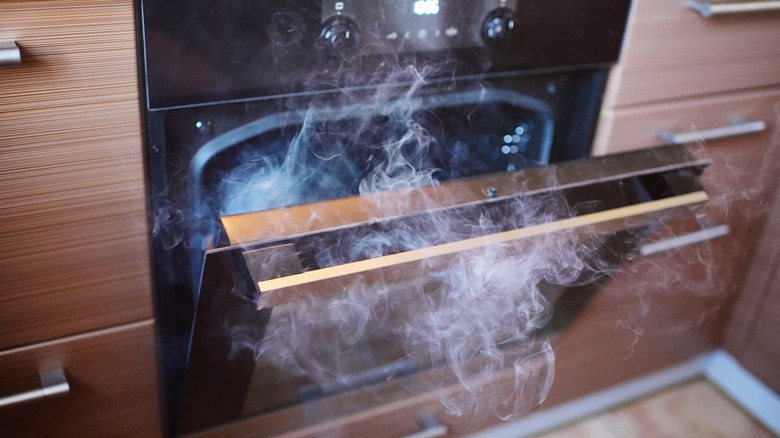The Rule Of Thumb For Baking With Convection Ovens Vs. Conventional Ovens
We may receive a commission on purchases made from links.
The frustrating truth about basic kitchen appliances is that they are very seldom basic. This is especially true for the two most essential kitchen tools: the stove and the oven. For avid home cooks, the specific details of an oven or range can be a deciding factor in purchasing or renting a home, as they will determine the possibilities and limits you face in the kitchen. Take the stovetop. KitchenAid lists five broad categories of ranges, and that's not even getting into specific models. There are gas cooktops, but those are steadily being phased out. Then you've got electric cooktops, but those come in multiple forms, including coiled, induction, and downdraft, each of which comes with different pros and cons. Selecting one inevitably becomes a whole research project.
Ovens can also be gas or electric. They may be wall-mounted, freestanding, or toaster-sized. There are even self-cleaning ovens. Kitchen supplier Maytag tells buyers to consider pricing, size, available gas and power hookups, and their personal cooking aspirations before deciding on a purchase. As important as those factors are, the most prominent difference among any selection of ovens is whether they are the conventional kind or the convection kind. Although Masterclass notes that convection ovens are more common in commercial kitchens, it's becoming increasingly likely to find them in homes, and you can't use them in the same way as their conventional kin.
What is a convection oven anyway?
Convection ovens were unveiled by the Malleable Iron Range Company in 1967, initially as a tool for professional bakers (via Michigan State University). However, subsequent advances in technology have made convection ovens more affordable for home cooks, making it more likely that you'll encounter one yourself. Superficially, convection ovens are no different than the conventional kind, but their inner workings are unique. Baking brand Bob's Red Mill explains that both convection and conventional ovens typically have a single heat source, usually located at the bottom of the oven space, convection ovens have two extra features: a fan and an exhaust system.
A convection oven circulates air within the oven, evenly distributing the heat (similar to the way an air fryer works). Additionally, the exhaust system removes excess moisture that can build up within the oven. MasterClass notes that there are several advantages to using a convection oven, the first being that even heat distribution means even cooking. In conventional ovens, you often need to rotate your food a few times to ensure that one half doesn't bake faster than the other, but this isn't necessary for a convection oven. Even circulation of heat also means that you can use all the racks in your oven at once, with each level maintaining the same temperature. A convection system is very useful if you can get it, however, it also poses some challenges to bakers who've only used a conventional oven before.
Why baking in a convection oven is different than a conventional oven
One of the major perks of convection ovens highlighted by MasterClass is their energy efficiency. For starters, convection ovens take less time to preheat, and less time with the oven on means less energy consumed. Furthermore, the even heat distribution means that food cooks faster. However, there is a flip side to this. Unless you're working with a recipe specifically written for a convection oven, you'll have to make some adjustments. Otherwise, you risk overcooking your food. There are two ways to do this: adjusting the heat or adjusting the cooking time. According to Masterclass, things cook approximately 25% faster in a convection oven than in a conventional one, so you could potentially save a quarter of the time.
Food & Wine suggests reducing the oven heat by 25 degrees to even things out. However, some companies are now making convection ovens that automatically adjust their temperature to account for the difference in a conventional oven, so be sure to read the manual before trying either the time or temperature reduction methods. One final point to consider comes from Michigan State University, which highlights the fact that convection ovens create a drier environment than conventional ones. This is good for some foods, but there are instances, such as baking bread or cheesecake, where you actually need some humidity in the air. Fortunately, most convection ovens have a conventional setting, so you can easily switch between the two.


